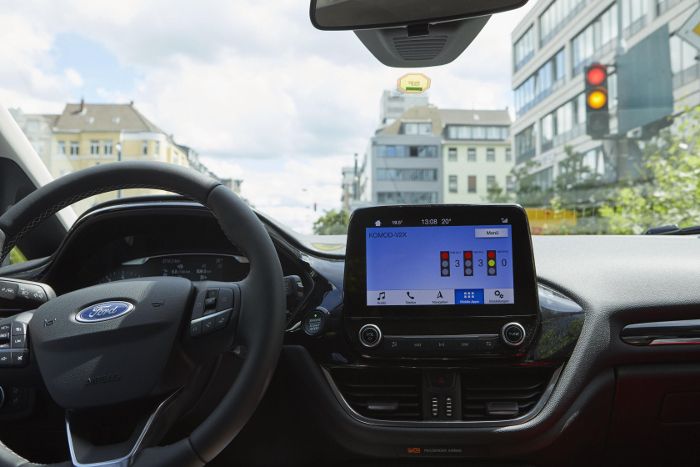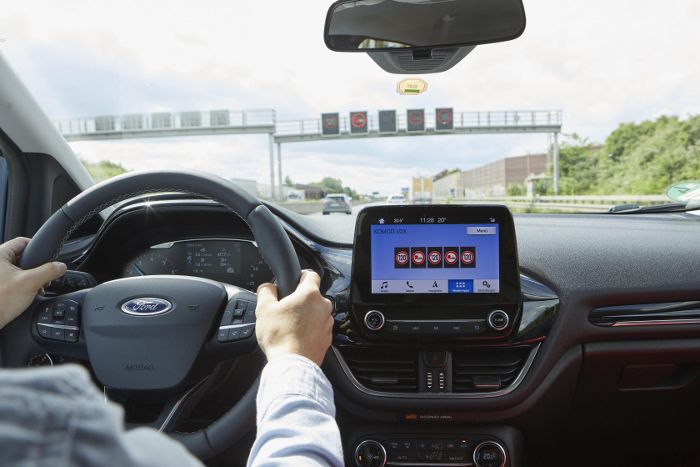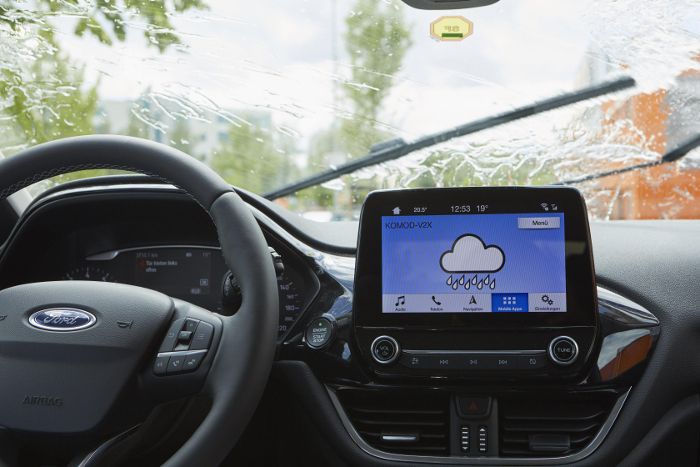Automaker Ford and the Vodafone telecommunications group are demonstrating a Parking Space Guidance system that advises drivers on space availability and location as part of a connected vehicle (CV) technology pilot project in the German city of Dusseldorf.
In many cities, it is estimated that the average driver spends as much as 67 hours every year searching for parking spaces, with this ‘cruising’ responsible for approximately 30% of urban traffic, contributing to unnecessary congestion and emissions. However, the problem might not be all down to a lack of parking spaces with data showing that in the UK some local authority car park occupancy rates can be as low as 50%. Ford and Vodafone are now testing new CV technology that could make it easier to find parking spaces in city centers, with the Parking Space Guidance system informing drivers about the number of vacant spaces in nearby car parks and how to get to them.
Parking Space Guidance, which is updated in real-time based on car park data, is being trialed by Ford and Vodafone as part of the KoMoD (Kooperative Mobilität im digitalen Testfeld Düsseldorf) program, a EUR15m (US$16.9m) cross-industry project testing new CV and automated driving technologies. As test vehicles drive through the city, they receive road status and car park information from a central computer system, based on their geolocation, along with information from nearby dynamic digital road signs.

Other CV features being demonstrated as part of KoMoD include:
- Traffic light assistance system, in which the time remaining on upcoming red or green traffic signals is displayed on the instrument panel. Advance warnings can reduce hard braking, leading to safety, fuel economy and traffic flow benefits as drivers adjust their speeds accordingly;
- Tunnel information system, which provides advance information about lane closures, speed limits and slow-moving vehicles in tunnels up ahead;
- Vario display delivers up-to-date information to the instrument cluster about major events that may impact local traffic, such as exhibitions, concerts or football matches;
- Traffic control systems on the motorway help to improve the overall traffic flow by adapting speed limits;
- Smart traffic sign transmission sends speed limit and hazard sign information directly to vehicle displays. While sign recognition cameras are present in many vehicles, they can be challenged in poor weather or surrounded by high-sided vehicles. Transmitting sign information to the vehicle using a cellular connection directly from the sign or a nearby road-side unit (RSU) ensures drivers get the information;
- Bad weather warning automatically communicates current conditions from one vehicle to others nearby, advising drivers to adjust their speed or route.

Previous KoMoD trials have demonstrated how the technology can automatically warn other drivers of accidents on the road ahead, as well as the exact location of nearby emergency vehicles and how to get out of their way.
“Satnavs are great at helping us to get to our destination, but aren’t so useful when it comes to helping us to park there, especially in city centers,” said Tobias Wallerius, product development engineer at Ford. “Parking space guidance is a connected‑vehicle technology that could help drivers to more quickly complete their journey, saving them money, time and benefitting overall air quality.”





